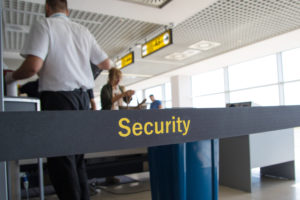Say you eat at a certain "trendy" restaurant once a year. Last year, you had to wait 45 minutes in line for a table. But this year, you see no line at the door, and the headwaiter escorts you right to the one unoccupied table. And when the waiter hands you a tablet instead of the traditional paper menu, the prices are double what they were last year. Welcome to the emerging world of dynamic pricing.
A basic concept in Economics 101 is that price serves to equalize supply and demand. And, especially with services, demand is likely to be extremely variable—by hour, day of the week, and season. Any time you see a line or wait list, the prices are too low. Any time you see empty capacity, the prices are too high.
But you already knew that. And the travel industry has a long history of trying to sell at high prices when demand is high and at lower prices when it isn't. The main instruments they employ are pretty blunt, usually some forms of fixed peak/off-peak pricing. Restaurants offer "early bird" discounts for folks willing to eat dinner before 6 p.m. Hotels hike prices when a big event is in town and cut prices during slack seasons. At AT&T Park, you pay a lot more for the same seat at a key late-season Dodgers game than an early season game against the Cubs. Because of the way they price seats, airlines can adjust to different demand levels without actually changing any list prices. Instead, they manipulate the allocation of seats into different fare buckets.
So this kind of pricing to demand isn't new. What is new is the ability to change price levels or allocations on a real-time basis. That tablet menu the waiter handed you might say something like, "These prices are effective for you for the next 60 or 90 minutes." Someone coming in 10 minutes after you might see the same prices or the prices may be higher or lower. Rather than sell out early, hotels might keep hiking prices as it fills; rather than have a lot of vacancies, hotels might cut rates to the bone. The restaurant's objective is always to have one table open; the hotel's, always one room available to sell.
Implementing dynamic pricing these days is a piece of cake. Folks who sell computers and software are ready to go right now. (Don't you hate those companies that call their product a "solution" rather than the software or gadget it really is?)
Dynamic pricing like this has some consumer benefits: Prices will be extremely low if you're able and willing to eat/stay/fly when demand is low. By the same token, however, you will see what looks like gouge prices when you try at popular times.
A big problem with dynamic pricing is that you can't pin the price down in advance. At best, suppliers can post both a "buy now" price with a cancellation penalty and estimated "at-the-time" probable prices for future dates. Again, no sweat for computer systems. Online agencies might even offer you a "hedge" against unpredictability—for a fee, of course.
As a consumer, dynamic pricing turns you into something of a speculator. You have to make your own guesses about possible levels of demand at various times. For many of you, dynamic pricing will push you in the direction of early purchase. And it also means you have to get over, once and for all, the mindset that nobody else should pay less than you pay. If it looks like a good value, don't sweat the possibility that prices might drop later.
Real-time dynamic pricing won't happen overnight. Different companies will adopt it at different times. And, at least initially, changes will probably be slow to take place. But make no mistake: Dynamic pricing will be with you before you know it.
Ed Perkins on Travel is copyright (c) 2014 Tribune Media Services, Inc.
You Might Also Like:
Recent Travel Changes That May Affect You
Primary Sellers vs. Online Travel Agencies: A Game of Tug-of-War
JetBlue Breaks Our Hearts: Will Cut Legroom, Charge for Bags
27 Awesome Photos of the American West
This article was originally published by SmarterTravel under the title The Price Gouge You Won't See Coming. Follow Ed Perkins on Google+ or email him at editor@smartertravel.com.






